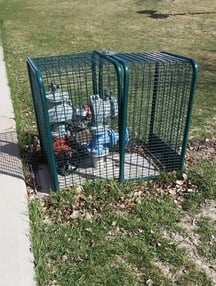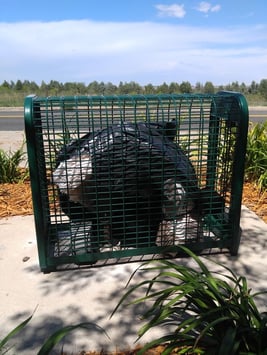
Is it worth it to winterize backflow prevention devices? You may be surprised to learn that cages are very popular throughout Colorado and the surrounding areas, however they do not offer winterization or proper insulation. Larger backflow preventers are typically installed in vaults or inside, but the devices for irrigation and some domestic lines end up outdoors. There are a lot of parks, golf courses and schools that use 3-inch, 4-inch or even 6-inch RPZ backflow preventers that are installed outside. How is this possible when much of Colorado has more than 100 days per year where the temperature is around or below freezing? The backflow devices inside cages need to be "winterized" each year. This involves the owner doing one of two things: Either the community or building utilizing the irrigation system valves will turn off the line and physically remove the valve, or they will insulate the isolation valve with another product.
Average Cost to Winterize Backflow Prevention Devices
The easiest way to winter proof backflow preventers is to purchase something with which to insulate it. There are insulating bags, sometimes called blankets, on the market that will fit on small backflow valves for less than $100. They are advertised as having an R-13 insulation factor but don't have specific information about what temperature they will maintain in cold weather. A popular brand of these bags claims they should last for two years. You can read all the details mentioned on this product page.
The other method to protect backflow preventers is to stop the water line and remove the pressure vacuum breaker, backflow assembly, or other devices that could freeze. Some opt to do this themselves, mostly the handier homeowners. Here is an outline of how this is done from SprinklerWarehouse: Turn off the water supply, shut down the controller, drain the water. There are a couple of different ways that draining the water from the lines, sprinkler ssystem and backflow device itself and if you're looking for exactly what to do, please visit the SprinklerWarehouse website.
The point is, it's not as easy as some may think. Most will end up hiring a professional to get it done, which is safer, but that certainly makes it more costly.
 Risks When a Backflow Preventer is Not Winterized
Risks When a Backflow Preventer is Not Winterized
The problem with trying to winterize backflow preventers, whether you're adding insulation to the backflow preventer each year or removing the valve, is that Mother Nature is unpredictable. When is the right time to protect backflow preventers and what happens if you're too late? It's difficult to know the right time of year in areas such as Colorado.
In Denver, the months with the highest amount of snowfall are March and April. There are often storms throughout the state as late as June and as early as October. Driving around Colorado, it's easy to tell that some have felt frustration from this and left insulating bags on their devices year-round tp prevent freeze damage. As you can see in the image to right, that isn't always pretty. If you're using the more reliable method of shutting down the line and removing the ball valve, you don't even have that luxury.
This isn't just an issue in states with characteristically cold weather climates. In January 2018, much of the southeastern United States, as well as Texas, froze. We received calls and reports from our local reps about many sprinkler system, irrigation system, pipes and other devices leaking after the freeze. Had those backflow preventers been inside enclosures with heaters, there would have been fewer problems.
Alternative Options to Cut Costs
Backflow cages have no insulation to provide frost or freeze protection but do provide some vandal, accident and theft protection as they are powder-coated steel and do include a locking mechanism. They are useful in warm environments that do not have below-freezing temperatures, but there is always a chance that the weather will do something unexpected as outlined above.
If you can plan for bad weather and winterize backflow preventers, while the cages are significantly less expensive than enclosures in your area, then a cage may be for you. Weigh your options because it's up to you to choose the level of protection your equipment needs and think about the time and resources you're willing to spend over the years. Using backflow cages in colder climates like Colorado is doable but does take extra planning, money and work. If you were to choose an insulated or heated enclosure instead, you'd have protected valves year-round, possibly for decades, without any extra thought or work needed.




